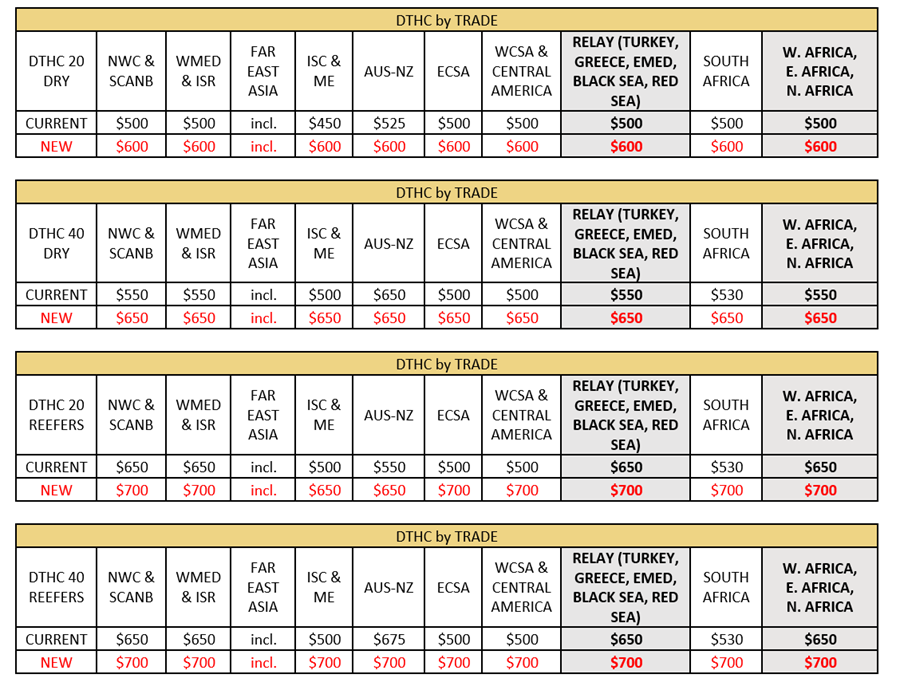Delivery Charges In Usa

In today's e-commerce landscape, understanding the intricacies of delivery charges is crucial for both businesses and consumers alike. This comprehensive guide delves into the world of delivery charges within the United States, shedding light on the factors that influence costs, the various pricing models employed, and the strategies that businesses utilize to optimize their shipping operations.
The Landscape of Delivery Charges in the USA

The United States, with its vast geography and diverse consumer base, presents a unique challenge when it comes to delivery logistics. As e-commerce continues to grow, so does the complexity of managing delivery charges, impacting both online retailers and customers.
Understanding the Factors at Play
Numerous variables come into play when determining delivery charges. Distance, weight, dimensions, and the type of service requested (standard, expedited, or overnight) are all critical factors. Additionally, surcharges for specific delivery requirements, such as residential delivery or remote areas, can significantly impact the final cost.
For instance, consider the case of an online retailer based in Los Angeles. When shipping to a customer in New York, the distance and the potential for additional surcharges due to the customer's residential address come into play. This example highlights the importance of understanding the nuances of delivery charges to accurately estimate and manage costs.
| Factor | Impact |
|---|---|
| Distance | Longer distances often result in higher shipping costs. |
| Weight | Heavier packages may incur additional fees. |
| Dimensions | Packages with large dimensions might face dimensional weight charges. |
| Service Type | Expedited or overnight services cost more than standard delivery. |

Pricing Models: A Deep Dive
The world of delivery charges is not one-size-fits-all. Various pricing models exist, each with its own advantages and considerations. Let’s explore some of the most common models used by shipping carriers.
Flat Rate Shipping
Flat rate shipping offers a simple, straightforward approach. Customers pay a fixed fee regardless of the order’s size or weight. This model is ideal for businesses looking to simplify their shipping process and provide transparent pricing to customers. However, it may not always reflect the actual cost of shipping, especially for larger or heavier orders.
Tiered Pricing
Tiered pricing structures divide orders into different categories based on weight, dimensions, or value. Each tier has its own shipping rate, allowing businesses to offer more precise pricing. This model can be advantageous for businesses with a wide range of products, ensuring that shipping costs are accurately reflected.
Real-Time Rate Calculation
Real-time rate calculation utilizes live shipping rates provided by carriers. This dynamic model takes into account the latest shipping costs, ensuring that customers are quoted the most accurate and up-to-date price. While it may require more complex integration with shipping carriers, it offers the most precise pricing for customers.
Free Shipping
Offering free shipping is a strategy employed by many e-commerce businesses to entice customers. However, it’s important to note that free shipping is often a marketing tactic, with the cost of shipping typically built into the product’s price. While it can increase customer conversion, it requires careful consideration of margins and overall shipping costs.
Strategies for Optimizing Delivery Charges

For businesses, managing delivery charges is not just about setting prices; it’s about finding the right balance between customer satisfaction and profitability. Here are some strategies that businesses employ to optimize their delivery charges.
Negotiating with Carriers
Building a strong relationship with shipping carriers is key. Through negotiation, businesses can secure better rates, especially when they have a significant shipping volume. This strategy requires ongoing communication and a deep understanding of the carrier’s services and rates.
Utilizing Technology
Technology plays a pivotal role in optimizing delivery charges. Advanced shipping software can help businesses automate the rate calculation process, ensuring accuracy and consistency. Additionally, integrating shipping with e-commerce platforms can streamline the entire order fulfillment process.
Strategic Pricing
Businesses often employ strategic pricing models to attract customers and manage costs. This can include offering discounts on shipping for bulk orders or implementing dynamic pricing, where rates are adjusted based on demand or seasonality. Such strategies require a deep understanding of customer behavior and market trends.
Improving Shipping Efficiency
Optimizing the shipping process itself can lead to significant cost savings. This includes leveraging drop shipping for certain products, implementing efficient packing strategies to reduce weight and dimensions, and exploring alternative shipping methods like ground shipping over air freight.
The Future of Delivery Charges
As e-commerce continues to evolve, so too will the landscape of delivery charges. Here are some trends and predictions that are shaping the future of shipping costs.
The Rise of Subscription Models
Subscription-based e-commerce is on the rise, and with it, the potential for subscription-based shipping models. Customers may opt for a monthly or annual shipping subscription, providing them with reduced rates or even free shipping for a set period.
Increased Use of AI and Machine Learning
AI and machine learning are poised to revolutionize the shipping industry. These technologies can analyze vast amounts of data to predict shipping costs, optimize routes, and even suggest the most cost-effective shipping methods for specific orders.
Sustainable Shipping Solutions
With a growing focus on sustainability, businesses are exploring eco-friendly shipping options. This includes utilizing electric vehicles for last-mile delivery, optimizing routes to reduce carbon emissions, and even exploring carbon offset programs to mitigate the environmental impact of shipping.
Enhanced Customer Experience
The future of delivery charges is also about enhancing the customer experience. Businesses are investing in technologies like real-time tracking, predictive delivery estimates, and even offering customers the ability to choose their preferred delivery time and location.
How do shipping carriers determine their rates?
+Shipping carriers determine their rates based on a variety of factors, including distance, weight, dimensions, and the type of service requested. Additionally, surcharges for specific delivery requirements play a role in the final cost.
What are some common pricing models used by shipping carriers?
+Common pricing models include flat rate shipping, tiered pricing, real-time rate calculation, and free shipping. Each model has its own advantages and considerations, and businesses often choose based on their specific needs and customer expectations.
How can businesses optimize their delivery charges?
+Businesses can optimize delivery charges through strategies like negotiating with carriers, utilizing technology to automate rate calculations, implementing strategic pricing models, and improving shipping efficiency through techniques like drop shipping and efficient packing.



